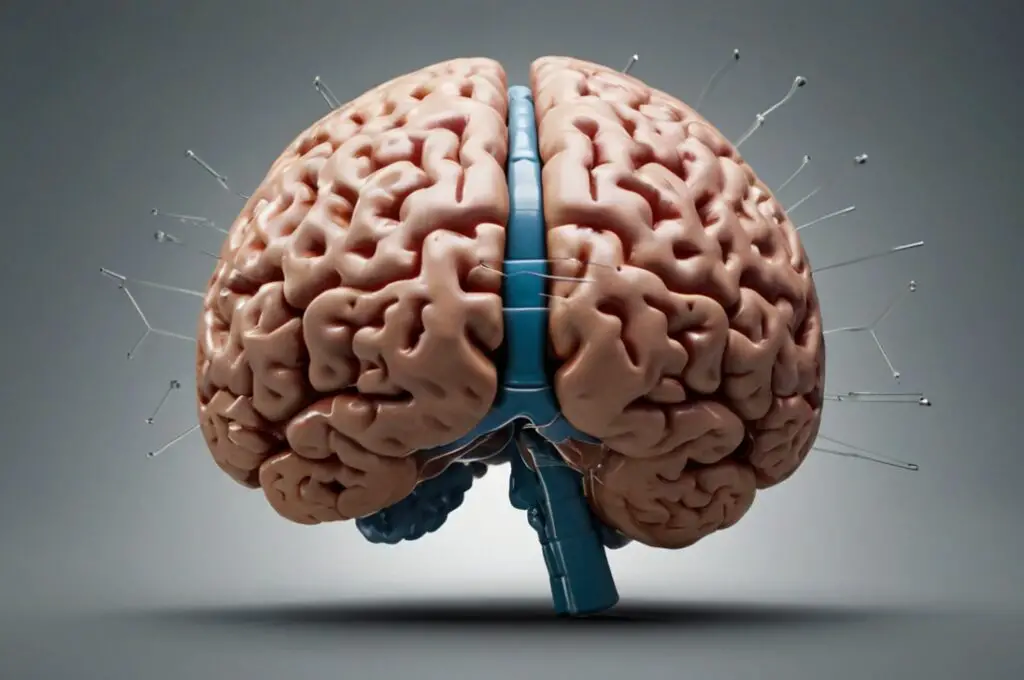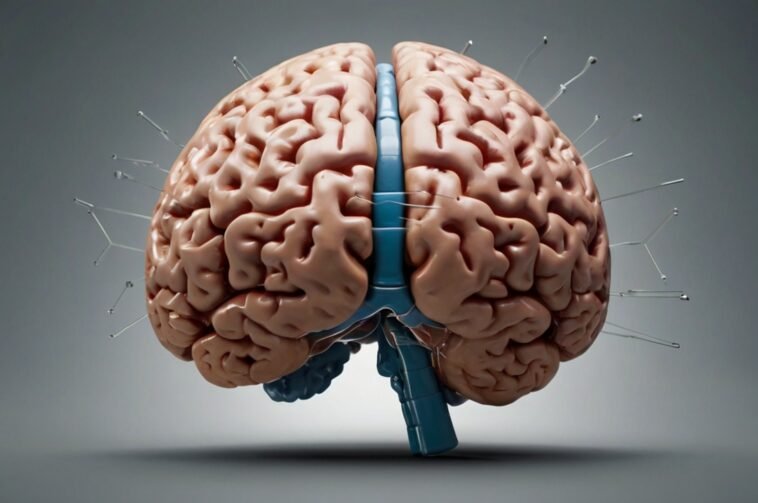
Cerebral hemorrhage, also known as brain bleeding, is a serious medical condition that can be life-threatening if not promptly treated.
It occurs when blood vessels in the brain rupture, leading to bleeding that damages brain tissue and disrupts normal function.
Understanding the different types of cerebral hemorrhage is crucial for early detection, effective treatment, and improving patient outcomes.
In this blog post, we’ll explore what cerebral hemorrhage is, the various types, their symptoms, treatments, and how to reduce the risk.
What is Cerebral Hemorrhage?
Cerebral hemorrhage is a type of stroke caused by the rupture of blood vessels in the brain.
When blood leaks into brain tissue or the spaces around the brain, it causes swelling and pressure, damaging brain cells.
According to the Journal of Stroke, cerebral hemorrhages account for about 10-15% of all strokes, but they are responsible for a disproportionately high rate of stroke-related deaths and disabilities.
Different Types of Cerebral Hemorrhage
There are several types of cerebral hemorrhages, each occurring in different areas of the brain and presenting with distinct causes, symptoms, and treatment options.
These include:
Intracerebral Hemorrhage (ICH)
Definition and causes
Intracerebral hemorrhage (ICH) is the most common type of bleeding in the brain.
It happens when an artery in the brain bursts, causing blood to flood into the surrounding brain tissue. The main cause of ICH is high blood pressure, which weakens the blood vessels over time.
Other causes include head injuries, abnormal blood vessels (called arteriovenous malformations or AVMs), and problems with blood clotting.
Symptoms and diagnosis
Symptoms of ICH can come on suddenly and may include:
- a severe headache
- nausea
- weakness on one side of the body
- trouble speaking
- and even loss of consciousness.
Doctors typically use a CT scan or MRI to find where the bleeding is and determine how serious it is.
Treatment options
Treatment for ICH aims to stop the bleeding, reduce the pressure in the brain, and manage the symptoms.
This may involve medications to lower blood pressure, prevent seizures, or reduce swelling.
In more severe cases, surgery might be necessary to remove blood clots or fix damaged blood vessels.
Prognosis
The outlook for ICH depends on how large and where the bleeding is, as well as the person’s overall health.
Sadly, about 40% of people with ICH do not survive past 30 days, according to research from The Journal of Neurosurgery.
However, with early treatment and aggressive care, the chances of recovery can improve.

Subarachnoid Hemorrhage (SAH)
Definition and causes
A subarachnoid hemorrhage (SAH) happens when blood gathers in the space between the brain and the membranes that cover it.
The most common cause of SAH is the rupture of an aneurysm, which is a weak spot in a blood vessel that bulges and eventually bursts.
Other causes can include head injuries or abnormal blood vessels (known as arteriovenous malformations, or AVMs).
Symptoms and diagnosis
SAH usually presents with a sudden and very severe headache, often described as the “worst headache of one’s life.”
Other symptoms may include:
- neck stiffness
- nausea
- blurred vision
- and sometimes loss of consciousness.
To diagnose SAH, doctors typically use a CT scan or a lumbar puncture (spinal tap) to check for blood in the cerebrospinal fluid.
Treatment options
Treatment for SAH often involves surgery to stop the bleeding and prevent further damage.
This can include procedures like clipping the aneurysm or using endovascular coiling.
Doctors may also prescribe medications to help control blood pressure, reduce swelling, and prevent seizures.
Prognosis
The outlook for SAH largely depends on how quickly treatment is provided.
Research shows that about 30% of patients die within the first 24 hours, and around 50% do not survive beyond six months.
Survivors may face long-term neurological issues but getting early and effective treatment can significantly improve their chances of recovery.
Epidural Hemorrhage
Definition and causes
An epidural hemorrhage occurs when blood collects between the skull and the dura mater, which is the outer covering of the brain.
This type of bleeding is usually caused by traumatic head injuries, often from accidents or falls that damage the arteries in that area.
Symptoms and diagnosis
People with an epidural hemorrhage may briefly lose consciousness but then seem alert for a while.
This state of lucidity can quickly change, leading to confusion, severe headaches, and a loss of consciousness again.
To diagnose this condition, a CT scan is essential to detect and locate the bleeding.
Treatment options
Epidural hemorrhages are considered medical emergencies and often require surgery to remove the blood clot and relieve pressure on the brain.
Timely intervention is crucial to avoid long-term damage or death.
Prognosis
If surgery is performed quickly, the outlook for people with an epidural hemorrhage can be quite positive.
Research from the Journal of Neurotrauma shows that patients who receive treatment within hours of their injury have a survival rate of up to 80%.
However, delays in treatment can significantly decrease these chances.
Subdural Hemorrhage
Definition and causes
A subdural hemorrhage occurs when there is bleeding between the dura mater (the brain’s outer layer) and the surface of the brain.
This bleeding often results from trauma or head injuries.
In older adults, chronic subdural hematomas can develop gradually, especially if their brains have shrunk, which makes them more susceptible to bleeding.
Symptoms and diagnosis
Symptoms of a subdural hemorrhage can include:
- headaches
- Confusion
- difficulty with balance
- drowsiness
- and neurological issues like weakness or numbness.
To diagnose this condition, doctors typically use a CT scan or MRI to confirm the presence of blood and assess how extensive the bleeding is.
Treatment options
Treatment for a subdural hemorrhage depends on how large the bleed is.
Small subdural hematomas may only require monitoring and medication to manage symptoms.
However, larger hematomas often need surgical procedures, such as drainage or a craniotomy (surgery to remove a part of the skull), to remove the accumulated blood.
Prognosis
The outlook for individuals with a subdural hemorrhage can vary.
Generally, younger patients and those who receive treatment quickly tend to have better outcomes.
According to a study published in the British Journal of Neurosurgery, the mortality rate for acute subdural hemorrhage can be as high as 60% if treatment is delayed.

Risk Factors for Cerebral Hemorrhage
Understanding the risk factors for cerebral hemorrhage is crucial for prevention and early detection.
Here are some key factors that can increase the risk:
Age
As people get older, particularly those over 55, their risk of experiencing a cerebral hemorrhage increases.
This is often due to the natural weakening of blood vessels and other age-related changes in the body.
Hypertension (high blood pressure)
High blood pressure is one of the leading causes of cerebral hemorrhage.
It can damage blood vessels over time, making them more likely to rupture and cause bleeding in the brain.
Managing blood pressure through lifestyle changes and medication is vital for reducing this risk.
Aneurysms
Aneurysms are weakened areas in blood vessels that bulge out.
If these bulges burst, they can lead to serious bleeding in the brain.
People with known aneurysms should be monitored regularly by healthcare professionals.
Blood clotting disorders
Certain medical conditions, such as hemophilia, or medications like anticoagulants (which thin the blood), can increase the risk of bleeding.
Individuals with these conditions need careful management and monitoring to prevent complications.
Head injuries
Traumatic brain injuries are a significant cause of cerebral hemorrhages, especially in younger people and athletes.
This can occur from falls, accidents, or contact sports.
Wearing protective gear and taking precautions can help reduce the risk of head injuries.
Drug abuse
Substance abuse, particularly of drugs like cocaine, can raise blood pressure significantly, increasing the risk of a cerebral hemorrhage.
It’s important for individuals to seek help for substance abuse issues to mitigate these health risks.
Certain medications
Medications that affect blood clotting, such as blood thinners, can heighten the risk of brain bleeds.
Patients taking these medications should be aware of their potential side effects and work closely with their healthcare provider to manage their use safely.

Prevention Strategies
While it’s important to note that not all cerebral hemorrhages can be prevented, there are several strategies that can help reduce the risk:
Managing high blood pressure
Keeping blood pressure under control is crucial.
Regular monitoring and taking prescribed medications can help maintain healthy blood pressure levels.
Lifestyle changes, such as eating a balanced diet, exercising regularly, and reducing salt intake, can also contribute to better blood pressure management.
Avoiding smoking and excessive alcohol consumption
Smoking and drinking too much alcohol can harm blood vessels, making them more prone to damage and rupture.
Quitting smoking and moderating alcohol intake can significantly lower the risk of cerebral hemorrhage and improve overall health.
Regular check-ups for underlying health conditions
Routine health check-ups are important for catching any potential issues early on.
These assessments can help identify risk factors like aneurysms or blood clotting disorders.
Early detection allows for timely treatment and better management of these conditions.
Recognizing and addressing symptoms promptly
Being aware of the signs and symptoms of cerebral hemorrhage is essential.
If someone experiences sudden severe headaches, confusion, weakness, or other concerning symptoms, it’s important to seek medical attention immediately.
Early detection and intervention can greatly improve outcomes and potentially save lives.

Final Thoughts
Cerebral hemorrhages are serious medical emergencies that require immediate attention.
Understanding the different types, their causes, and symptoms can help in early detection and effective treatment.
Preventative measures, like managing blood pressure and avoiding risky behaviors, play a crucial role in reducing the risk of cerebral hemorrhage.
If you suspect you or someone you know is experiencing symptoms of a brain bleed, seek emergency medical attention immediately.
FAQs
High blood pressure is the leading cause, especially for intracerebral hemorrhages.
While not all can be prevented, managing risk factors like hypertension and avoiding head injuries can reduce the likelihood.
Survival rates vary depending on the type, severity, and speed of treatment. Early intervention significantly improves outcomes.
Diagnosis typically involves imaging tests such as CT scans or MRIs to detect bleeding and assess its location and severity.



